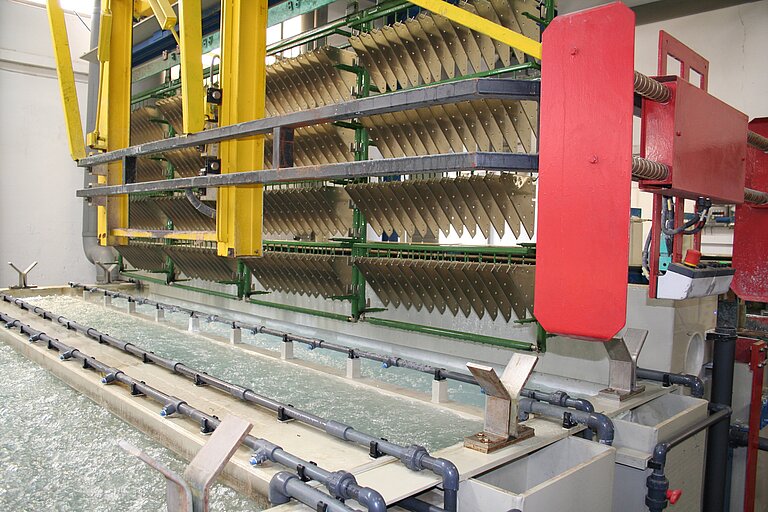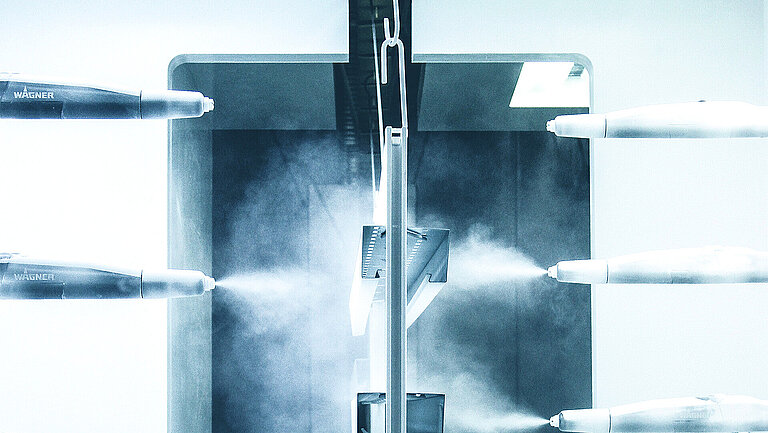Galvanizing process at a glance
Hot-dip galvanizing creates a solid bond with the base material in the form of a more or less pronounced hard iron-zinc layer and an overlying pure zinc layer.
Depending on the alloying elements silicon and phosphorus, the layer structure (in batch galvanizing) is sometimes uncontrollably strong due to the process-related dwell time of several minutes in the molten zinc. This can have a negative impact on dimensional accuracy. Piece galvanizing coatings generally offer the best corrosion protection for the finished product and are particularly suitable for welded parts, large-volume components and systems that are exposed to the elements.
In contrast, the layer structure in strip galvanizing is very uniform; due to the very short dwell time in the molten zinc, the zinc layer is thinner compared to batch galvanising. This has a positive effect on dimensional accuracy, but offers less protection against corrosion. The process is therefore suitable for products that are used in dry indoor areas. Continuously galvanized sheet metal is usually processed further.
In electrogalvanizing, zinc is deposited on the bare iron surface using an electric current. Due to the very thin and uniform layer thickness (usually between 5-15 µm) in this process, the component has a high dimensional accuracy. However, this is at the expense of corrosion resistance. Electrogalvanizing is therefore generally only used in slightly corrosive environments.
| Hot-dip galvanising | Strip galvanising (Sendzimir galvanising) | Galvanic or electrolytic galvanising | |
|---|---|---|---|
| DIN standards | DIN EN ISO 1461 DIN EN ISO 10684 für mech. fasteners | DIN EN 10346 | DIN EN ISO 19598 DIN EN ISO 2081 |
| Usual coating thickness | 50 to 150 mµ, depending on the material thickness: up to 1,5 mm = 45 µm up to 3 mm = 55 µm up to 6 mm = 70 µm | 7 to 25 mµ, at Niedax depending on product group | 2,5 to 20 mµ |
| Corrosion protection | 50 to over 100 years (with 100 µm coating) | 5 to 14 years (with 10 µm coating) | According to DIN ISO 9227 NSS: Depending on layer thickness and passivation type, approx. 360 hours in salt spray chamber. |
| Zinc depletion values in Central Europe per year | Depending on the atmosphere and the environment: Country air = 0,1 to 1,0 µm City air = 1,0 to 2,0 µm Sea air = 2,0 to 4,0 µm | Almost unlimited corrosion protection in dry indoor areas inhabited by people. Annual erosion barely measurable. | - |
| Alloying with the substrate | yes | yes | no |
| Composition of the coating | Distinctive iron-zinc alloy layer, usually with a pure zinc layer on top | Low iron-zinc alloy layer, usually with a pure zinc layer on top | Pure zinc coating |
| Usual aftercare | none | Chemical passivation, oiling | Chemical passivation, e.g. chromating |
| External features | Surface is relatively rough, freshly galvanized the surface shines brightly | Smooth surface, lightly greased | Attractive appearance with a bright, glossy surface |
| Purpose | Components with welded joints, systems that are exposed to the weather. | Components without welded joints up to 2 mm material thickness, in dry interior spaces. | Components of almost all sizes, technical corrosion protection to decorative finishing, in dry interiors. |



